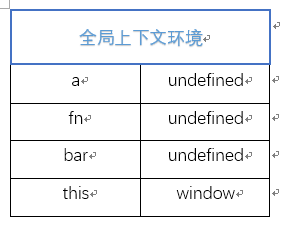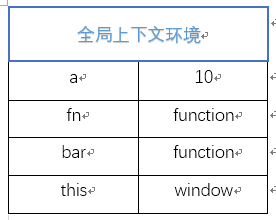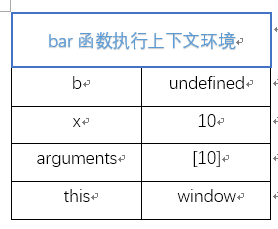 Web Front-end
Web Front-end
 JS Tutorial
JS Tutorial
 Talk about my understanding of JavaScript prototypes and closure series (random notes 8)_javascript skills
Talk about my understanding of JavaScript prototypes and closure series (random notes 8)_javascript skills
Talk about my understanding of JavaScript prototypes and closure series (random notes 8)_javascript skills
In the last article, I introduced you to "Talk about my understanding of JavaScript prototypes and closure series (random notes 6)" , Talk about my understanding of JavaScript prototypes and closure series (Random Note 9) You can click to learn more.
Execution context stack
When global code is executed, an execution context will be generated, and each time a function is called, an execution context will be generated. When the function call completes, this context and the data in it are eliminated and returned to the global context. There is only one active execution context.
Push and pop process----Execution context stack:

var a = 10, //1. 进入全局上下文环境
fn,
bar = function(x) {
var b = 5;
fn(x + b); //3. 进入fn函数上下文
};
fn = function(y) {
var c = 5;
console.log(y + c);
};
bar(10); //2. 进入bar函数上下文环境 1. Before execution, first create a global context

2. Code execution. Before bar(10) is executed, variables in the global context are assigned values during execution.

3. When executing to bar(10), call the bar function and create an execution context inside the function

4. At this time, it is time to push the execution context onto the stack and set it to the active state

5. The bar function executes to fn(x + b), calls the fn function, creates the execution context of the fn function, pushes it onto the stack, and sets it to the active state

6. After the execution of the fn function is completed, the fn environment is popped off the stack, destroyed, the memory is released, and the bar function becomes active

7. The fn function is executed and destroyed, which means that bar is also executed. At this time, the bar function environment is popped off the stack and destroyed. The global environment becomes active.

The execution process of this piece of code is complete at this point.
According to the original author’s description:
I have omitted many of the variable assignment processes in the context, because they are not difficult and can be understood at a glance.
Indeed! After the approximate execution process of the code is completed, you can clearly know the status of the variables in each execution environment.
At this point, I have to regret to tell you: In fact, what we demonstrated above is a relatively ideal situation. There is a situation, and it is a very common situation, where it is impossible to destroy it as cleanly as possible. This situation is great - closure. To talk about closures, we have to start with free variables and scope.
The above content is the editor sharing with you my understanding of JavaScript prototypes and closure series (random notes 8). I hope you like it.

Hot AI Tools

Undresser.AI Undress
AI-powered app for creating realistic nude photos

AI Clothes Remover
Online AI tool for removing clothes from photos.

Undress AI Tool
Undress images for free

Clothoff.io
AI clothes remover

Video Face Swap
Swap faces in any video effortlessly with our completely free AI face swap tool!

Hot Article

Hot Tools

Notepad++7.3.1
Easy-to-use and free code editor

SublimeText3 Chinese version
Chinese version, very easy to use

Zend Studio 13.0.1
Powerful PHP integrated development environment

Dreamweaver CS6
Visual web development tools

SublimeText3 Mac version
God-level code editing software (SublimeText3)

Hot Topics
 1386
1386
 52
52
 What should I do if I encounter garbled code printing for front-end thermal paper receipts?
Apr 04, 2025 pm 02:42 PM
What should I do if I encounter garbled code printing for front-end thermal paper receipts?
Apr 04, 2025 pm 02:42 PM
Frequently Asked Questions and Solutions for Front-end Thermal Paper Ticket Printing In Front-end Development, Ticket Printing is a common requirement. However, many developers are implementing...
 Who gets paid more Python or JavaScript?
Apr 04, 2025 am 12:09 AM
Who gets paid more Python or JavaScript?
Apr 04, 2025 am 12:09 AM
There is no absolute salary for Python and JavaScript developers, depending on skills and industry needs. 1. Python may be paid more in data science and machine learning. 2. JavaScript has great demand in front-end and full-stack development, and its salary is also considerable. 3. Influencing factors include experience, geographical location, company size and specific skills.
 How to merge array elements with the same ID into one object using JavaScript?
Apr 04, 2025 pm 05:09 PM
How to merge array elements with the same ID into one object using JavaScript?
Apr 04, 2025 pm 05:09 PM
How to merge array elements with the same ID into one object in JavaScript? When processing data, we often encounter the need to have the same ID...
 Demystifying JavaScript: What It Does and Why It Matters
Apr 09, 2025 am 12:07 AM
Demystifying JavaScript: What It Does and Why It Matters
Apr 09, 2025 am 12:07 AM
JavaScript is the cornerstone of modern web development, and its main functions include event-driven programming, dynamic content generation and asynchronous programming. 1) Event-driven programming allows web pages to change dynamically according to user operations. 2) Dynamic content generation allows page content to be adjusted according to conditions. 3) Asynchronous programming ensures that the user interface is not blocked. JavaScript is widely used in web interaction, single-page application and server-side development, greatly improving the flexibility of user experience and cross-platform development.
 The difference in console.log output result: Why are the two calls different?
Apr 04, 2025 pm 05:12 PM
The difference in console.log output result: Why are the two calls different?
Apr 04, 2025 pm 05:12 PM
In-depth discussion of the root causes of the difference in console.log output. This article will analyze the differences in the output results of console.log function in a piece of code and explain the reasons behind it. �...
 How to achieve parallax scrolling and element animation effects, like Shiseido's official website?
or:
How can we achieve the animation effect accompanied by page scrolling like Shiseido's official website?
Apr 04, 2025 pm 05:36 PM
How to achieve parallax scrolling and element animation effects, like Shiseido's official website?
or:
How can we achieve the animation effect accompanied by page scrolling like Shiseido's official website?
Apr 04, 2025 pm 05:36 PM
Discussion on the realization of parallax scrolling and element animation effects in this article will explore how to achieve similar to Shiseido official website (https://www.shiseido.co.jp/sb/wonderland/)...
 Can PowerPoint run JavaScript?
Apr 01, 2025 pm 05:17 PM
Can PowerPoint run JavaScript?
Apr 01, 2025 pm 05:17 PM
JavaScript can be run in PowerPoint, and can be implemented by calling external JavaScript files or embedding HTML files through VBA. 1. To use VBA to call JavaScript files, you need to enable macros and have VBA programming knowledge. 2. Embed HTML files containing JavaScript, which are simple and easy to use but are subject to security restrictions. Advantages include extended functions and flexibility, while disadvantages involve security, compatibility and complexity. In practice, attention should be paid to security, compatibility, performance and user experience.
 Is JavaScript hard to learn?
Apr 03, 2025 am 12:20 AM
Is JavaScript hard to learn?
Apr 03, 2025 am 12:20 AM
Learning JavaScript is not difficult, but it is challenging. 1) Understand basic concepts such as variables, data types, functions, etc. 2) Master asynchronous programming and implement it through event loops. 3) Use DOM operations and Promise to handle asynchronous requests. 4) Avoid common mistakes and use debugging techniques. 5) Optimize performance and follow best practices.



